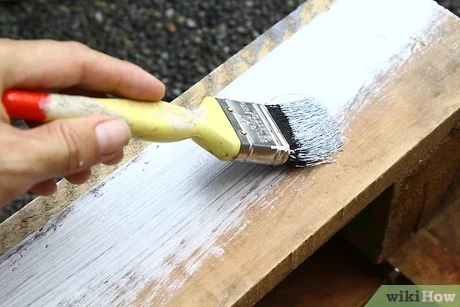What Are Wood Paints?

Wood paints, a niche yet integral part of the broad spectrum of beautifying and protecting wooden structures, are both an art and science. Every stroke unveils a story of aesthetics, durability, and preservation. This comprehensive guide will navigate through the intricate world of wood paints, enlightening the reader on their types, applications, and the enchanting metamorphosis they bring to wooden surfaces.
Types of Wood Paints
1. Water-Based Paints:
Water-based paints have gained popularity due to their low volatile organic compound (VOC) content, making them environmentally friendly. They dry quickly, are easy to clean, and offer a durable finish resistant to cracking and color fading.
2. Oil-Based Paints:
These traditional paints are renowned for their rich finish and durability. Although they take longer to dry, oil-based paints are preferred for their smooth application, leaving a glossy and hard-wearing surface that stands the test of time.
3. Stains:
Stains aren’t technically paints but are essential in the discourse of wood finishes. They penetrate the wood, enhancing its natural color and grain while offering protection against environmental elements.
4. Varnishes:
Like stains, varnishes aren’t paints but play a pivotal role. Composed of oils and resins, they offer a transparent finish, protecting the wood while highlighting its natural beauty.
5. Lacquers:
Fast-drying and offering a glossy finish, lacquers provide a hard and durable surface. They are often used on furniture, cabinets, and other interior woodwork.
6. Enamels:
Enamels are oil-based paints known for their hard, glossy finish. They are durable and often used for surfaces that require easy cleaning and resistance to wear and tear.
Application Techniques
The application process profoundly impacts the outcome of the painted wood. From preparation – involving cleaning, sanding, and priming – to the application, which can be done using brushes, rollers, or spray guns, each step is pivotal. Each tool and technique caters to different textures, finishes, and levels of detail, necessitating a strategic selection based on the project at hand.
Factors to Consider
1. Durability:
The choice of wood paint is often influenced by the paint’s ability to withstand environmental factors. For exteriors, the paint should resist weather conditions, while interior paints should be able to withstand wear and tear.
2. Aesthetics:
The texture and color of the paint play a significant role in amplifying the aesthetic appeal of the wood. The choice ranges from glossy, matte, to satin finishes, each offering a distinct visual experience.
3. Safety and Environmental Concerns:
Modern paint formulations focus on reducing harmful emissions. Low-VOC and zero-VOC paints are becoming popular, offering safety to the occupants and the environment.
4. Maintenance:
Ease of maintenance is another crucial factor. Some paints are easier to clean and maintain, making them preferable for areas prone to dirt and stains.
Maintenance of Painted Wood
Regular maintenance extends the lifespan of painted wood. It involves cleaning, touch-ups, and occasionally repainting to restore the wood’s aesthetic and protective qualities. The maintenance practices often hinge on the type of paint used, the environmental exposure, and the wear and tear experienced.
Wood paints are not just about splashing colors; they are a nuanced amalgamation of aesthetics, protection, and preservation. Each type, from the eco-friendly water-based paints, the luxurious oil-based alternatives, to the enhancing stains and varnishes, offers a unique narrative of transformation. The choice is dictated by the intricate dance between the desired aesthetic appeal, the requisite durability, and environmental considerations. Armed with this knowledge, every stroke of the brush can become a conscious step towards a masterpiece, where the wood, graced by the right paint, tells a timeless tale of beauty and resilience.



